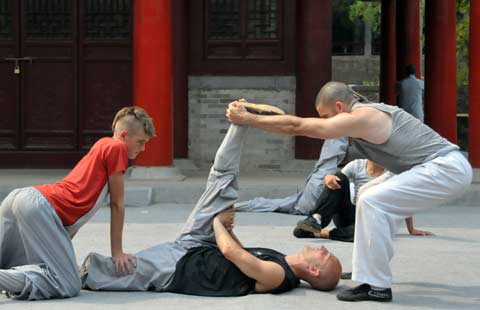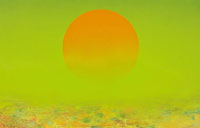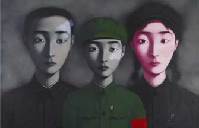Yang adds modern touch to ink
Updated: 2014-07-15 10:20
By Xiao Xiangyi (China Daily)
|
|||||||||||
 |
|
Yang Ermin is holding his solo show in Lodeve in southern France, showcasing his years of dedication to the exploration of Chinese ink paintings. Photos Provided to China Daily |
|
|
Then he embraced the avant-garde "New Wave Movement" that flourished in China between 1985 and 1989. The movement was the beginning of a process to reinvent Chinese art that had been eroded by decades of political turmoil, during which China had been effectively cut off from the rest of the art world.
Li Xiaoshan, an art theorist and critic of the time, published what he called his "view of contemporary ink-and-wash painting", in which he wrote that this most traditional of Chinese practices had effectively died. He described how "enormously disturbing" that would be to modern art.
Li's words moved Yang.
"People were still drawing the same things that painters drew in the 18th or 19th century. They were drowned in tradition. But art should never be allowed to lag behind society," Yang adds.
Yang remembers talking to a vegetable vendor, who realized he was a painter and who told him that he did not like ink painting.
"I was shocked when he told me that it was just too difficult to understand. He said he loved the bright colors of oil painting. I was shocked because he said he felt that ordinary Chinese people were abandoning their own culture and embracing Western art. The cornerstone of our very own art world was collapsing."
But Yang did not immediately turn to oil and stuck to his roots. He worked with ink, painting brush and rice paper and other such Chinese-made material. Although some people who viewed his work may have thought that Yang had used oil, acrylic or watercolor.
Related Stories
Inking a new future 2014-07-15 09:33
Yang Kai checks reality with ink 2014-07-14 16:02
X-ray art mimics Chinese ink paintings 2014-07-08 10:45
Famous Taiwan ink painting visits Beijing 2014-06-13 10:05
Artist captures Beijing's hutong in ink 2014-05-21 15:13
Today's Top News
Flash making emperor 'alive' goes viral
US artist creates lifelike baby animals
Chinese ink paintings shine in France
Anti-virus firms set to lose approved status
Scrawny tiger at Tianjin zoo arouses concerns
Canadian couple 'steal secrets' in China
Ukraine troops seek asylum in Russia
Food scandal hurt McDonald's results
Hot Topics
Lunar probe , China growth forecasts, Emission rules get tougher, China seen through 'colored lens', International board,
Editor's Picks

|

|

|

|

|

|







